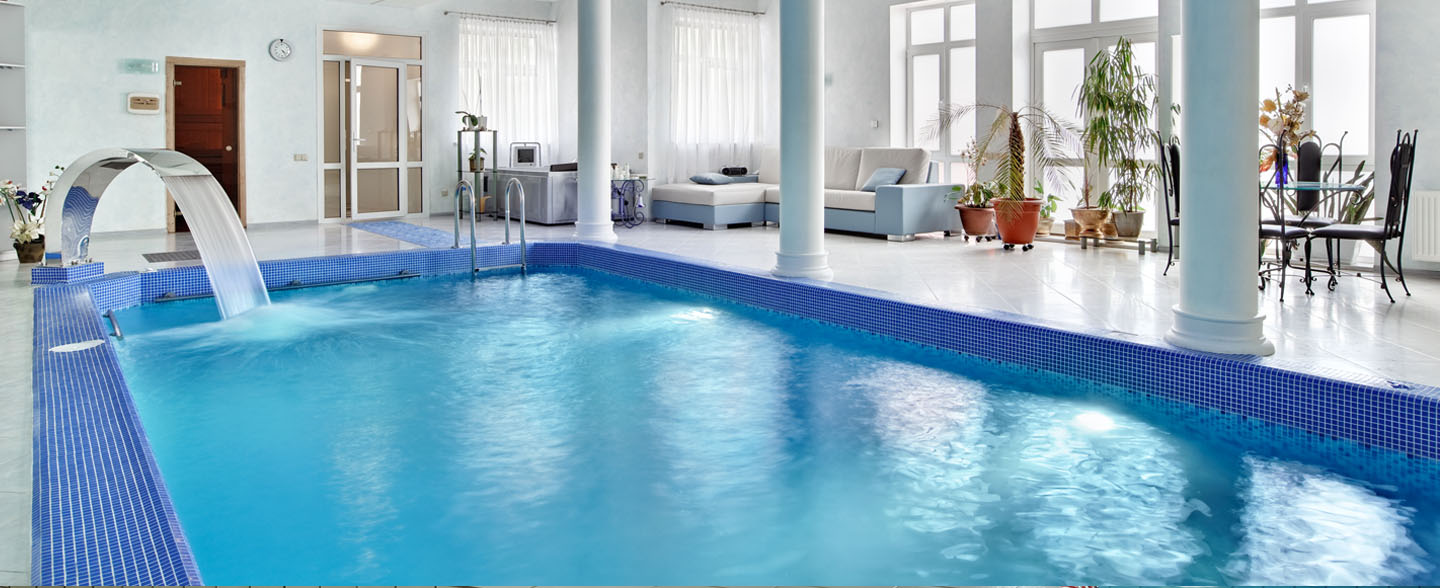The design of indoor pools and natatoriums requires a delicate balance between aesthetics, functionality, and the unique environmental challenges posed by the aquatic setting. Whether in a private residence, a community center, or a commercial facility, architects and designers have embraced various approaches to create stunning and efficient indoor pool spaces.
These are just a few popular design considerations that contribute to the success of indoor pool and natatorium projects.
Design Techniques for Indoor Pools and Natatoriums
Daylight Integration
One prevalent design approach focuses on maximizing the use of natural light. Large windows, skylights, or even glass walls are incorporated to bring in abundant daylight, creating a bright and inviting atmosphere. This not only enhances the visual appeal but also reduces the reliance on artificial lighting, contributing to energy efficiency.
Depending on your climate, sunlight may also naturally increase the temperature inside the indoor pool or natatorium. That can affect the comfort of the indoor pool area, or even contribute to the evaporation rate of water in the pool. It’s important to account for this, if needed, when choosing a dehumidification solution so that your indoor pool remains comfortable and safe year-round.
Ventilation and Humidity Control
Indoor pools come with the challenge of high humidity levels and potential issues related to poor ventilation. Successful design approaches prioritize efficient ventilation systems that control humidity, improve air quality, and prevent structural damage caused by moisture. This is crucial for the comfort of pool-goers and the longevity of the building.
Humidity control is also vital to the health of your visitors. Excessive humidity can lead to poor quality air in the pool facility, even causing mold and mildew to form and circulate through the building. This can be very hazardous, especially when left unchecked. Every sound indoor pool design must account for humidity. Check out our deep dive into popular natatorium designs for more common ways of addressing air quality.
Flexible Spaces and Multipurpose Design
To enhance the functionality of indoor pool areas, designers often adopt a flexible and multipurpose design approach. This involves creating spaces that can easily transition from swimming areas to recreational zones, fitness spaces, or event venues. Retractable enclosures, movable partitions, and versatile furniture allow for adaptability, making the most of the available space.
This requires a facility that addresses the needs of each distinct function. Pool dehumidification and ventilation will be key, but so will maintaining comfortable air for whatever other uses the building may have. These need to be anticipated from the on-set of the project so a facility can be created to meet your needs.
Integration of Water Features
Innovative design approaches often include the integration of various water features beyond the main pool. Waterfalls, fountains, and splash pads contribute to a dynamic and visually appealing environment. These features not only enhance the aesthetics but also provide sensory experiences, creating a more immersive atmosphere for visitors.
These water features typically rely on specialized pumps or other machinery to create the desired effect. It’s best to plan ahead for these, as well, knowing that any equipment will need to work in tandem with other pool systems.
Accessibility and Inclusivity
Designing indoor pools with a focus on accessibility and inclusivity is a growing trend. This involves incorporating features such as ramps, lifts, and zero-entry access points to accommodate individuals with varying levels of mobility. Additionally, creating spaces for therapeutic activities and programs contributes to a more inclusive and community-oriented facility.
Energy-Efficient Technologies
Sustainability is a key consideration in modern design approaches. Energy-efficient technologies, such as solar heating, LED lighting, and advanced HVAC systems, are incorporated to minimize the environmental impact of indoor pool facilities. These technologies not only reduce operational costs but also align with the growing demand for eco-friendly design solutions.
Sustainable indoor pool dehumidifiers are also growing in popularity, as they typically account for a sizeable, regular energy cost. Using a sustainable dehumidification system can make a big impact on energy efficiency, saving money and creating less strain on the environment.
Learn more about indoor pool and natatorium design with Seresco’s Natatorium Design Guide. Contact us today to find the right dehumidification solution for your indoor pool.
